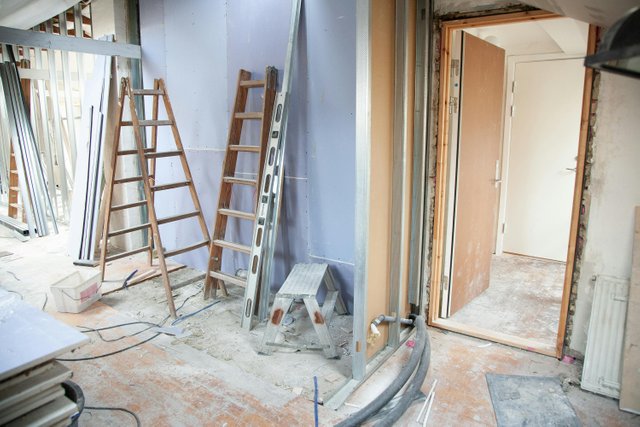Tackling more than one renovation at a time—like remodeling your kitchen, repainting the exterior, and updating your garage—can be exciting. It’s an opportunity to dramatically improve your home’s look, function, and value. But managing multiple projects simultaneously also introduces layers of complexity: scheduling contractors, coordinating permits, sequencing work correctly, and avoiding budget overruns.
This guide offers practical, step-by-step advice to help homeowners in Contra Costa and Alameda Counties (and beyond) successfully coordinate multiple home improvement projects without losing time, money, or peace of mind.
Why Homeowners Combine Projects in the First Place
There are several smart reasons to combine upgrades instead of spreading them out:
Cost efficiency: Bundling labor and materials can reduce overall costs
Time savings: One timeline instead of multiple disruptions over the years
Maximized access: Better to open walls or tear out floors once, not twice
Better design cohesion: Coordinating finishes and styles across rooms creates flow
Improved resale value: A complete, updated look is more attractive to buyers
But while the benefits are real, success hinges on careful planning and strategic execution.
Step 1: Define the Full Scope and Prioritize
Start by listing all the projects you’re considering. Group them by type and priority.
Common categories include:
Interior remodeling (kitchen, bathroom, flooring, paint)
Structural work (framing, foundations, room additions)
Exterior upgrades (siding, painting, garage doors, decks)
Mechanical systems (electrical, plumbing, HVAC)
Then prioritize based on:
Safety or code compliance
Resale value
Seasonal timing
Budget constraints
Whether the work overlaps (e.g., painting should follow construction)
Pro Tip: Projects that involve infrastructure (like foundation work or framing) should always happen before finish work (like painting or flooring).
Step 2: Choose a Contractor Capable of Managing Multiple Trades
Coordinating several subcontractors is a full-time job. If you’re hiring different companies for each task, you’ll be managing scheduling, supply delivery, and progress inspections across several fronts.
Instead, consider hiring a general contractor or design-build firm with:
Experience overseeing large, multi-phase residential renovations
In-house crews or trusted subcontractor relationships
Project management systems to keep timelines and budgets on track
Permit and inspection coordination expertise
Clear communication protocols and regular updates
Companies like Gar-Cal Corporation, which offer full-service residential construction, are well-equipped for this level of coordination.
Step 3: Set a Master Timeline — And Be Realistic
Every home renovation project affects others in some way. A well-structured timeline prevents overlap problems and allows trades to work efficiently.
Sample project sequencing:
Foundation/framing repairs (if applicable)
Structural changes (room additions, wall removal)
Rough-in work (electrical, plumbing, HVAC upgrades)
Drywall and insulation
Cabinetry and built-ins
Painting and interior finishes
Flooring installation
Final fixtures and trim work
Exterior painting or garage door installation
Punch list and final inspection
Note: Overlapping too many phases can result in rework, cost overruns, and contractor delays.
Step 4: Monitor Your Budget Closely
When multiple projects are running at once, it’s easy for small overruns in one area to snowball into major financial stress. Prevent that with proactive budgeting.
Tips:
Build a detailed line-item estimate for each project phase
Include allowances for materials, permits, and labor
Add a 15–20% contingency fund for unexpected costs
Track spending weekly, not monthly
Hold regular meetings with your contractor to stay ahead of budget shifts
Digital tools like Buildertrend, CoConstruct, or even simple spreadsheets can help you stay organized and make informed decisions on the fly.
Step 5: Know When to Move Out Temporarily
Sometimes, it’s not practical or safe to live in your home during extensive renovations. Signs it’s time to consider temporary housing:
Multiple rooms are under construction at once
HVAC, plumbing, or electricity will be offline
You're concerned about air quality or noise
Safety issues with children or pets in a work zone
If moving out isn’t an option, talk to your contractor about phased construction — such as finishing one section before starting another, or scheduling noisy/dusty tasks during the day when you’re away.
Step 6: Communicate, Communicate, Communicate
Clear and ongoing communication is the secret to successful project coordination.
What to establish up front:
Who your main point of contact is (project manager, foreman, lead contractor)
Preferred method of communication (email, app, phone)
Frequency of updates and site visits
What decisions you need to make in advance (tile choice, paint color, fixture specs)
How change orders will be handled
The more your contractor knows about your goals and preferences, the fewer missteps and delays you’ll encounter.
Step 7: Final Inspections and Punch List Review
Before you sign off on the entire project:
Walk through the home with your contractor
Create a punch list of any remaining items (touch-ups, missing hardware, misaligned doors)
Test all lights, outlets, appliances, plumbing fixtures, and HVAC systems
Confirm that all necessary permits have passed final inspection
Do not issue final payment until everything has been addressed to your satisfaction.
Bonus Tip: Bundle Services When Possible
When one contractor can handle multiple scopes of work, you benefit from:
Fewer delays between trades
Consistent design and material recommendations
More transparent budgeting
Easier scheduling
For example, a contractor like Gar-Cal Corporation, which offers remodeling, framing, foundations, painting, and garage door installations, can reduce friction between project phases and deliver a more seamless experience.
Final Thoughts
Coordinating multiple home improvement projects can be intimidating, but with smart planning and the right team, it can also be transformative. From kitchen remodels to structural upgrades, handling several projects at once is doable — and often cost-effective — when you:
Prioritize strategically
Choose experienced contractors
Build a clear timeline
Communicate consistently
Monitor your budget
The result? A home that works better, looks better, and supports your lifestyle for years to come.
